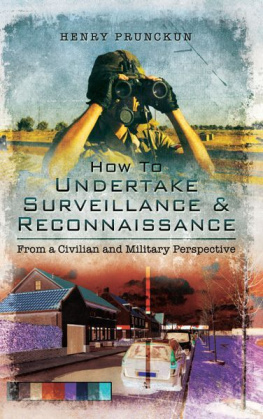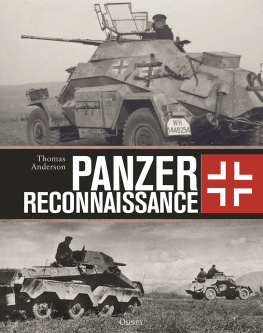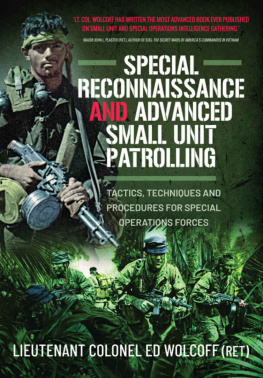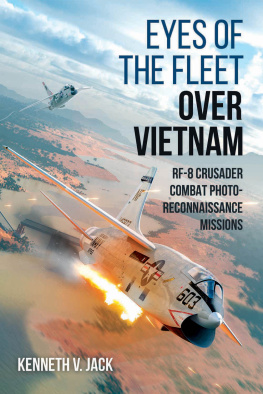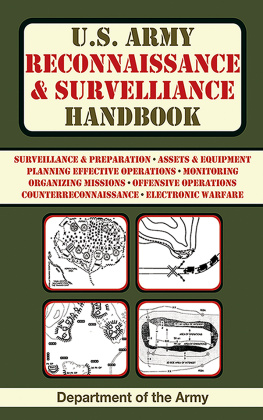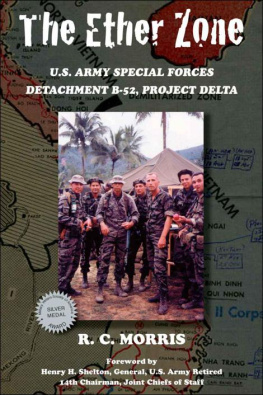To Naomi
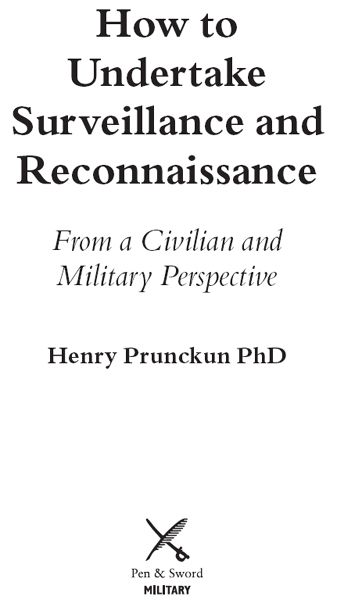
First published in Great Britain in 2015 by
Pen & Sword Military
an imprint of
Pen & Sword Books Ltd
47 Church Street
Barnsley
South Yorkshire
S70 2AS
Copyright Henry Prunckun 2015
ISBN: 978 1 47383 387 6
EPUB ISBN: 978 1 47385 937 1
PRC ISBN: 978 1 47385 936 4
The right of Henry Prunckun to be identified as the Author of this
Work has been asserted by him in accordance with the Copyright,
Designs and Patents Act 1988.
A CIP catalogue record for this book is available from the British
Library
All rights reserved. No part of this book may be reproduced or
transmitted in any form or by any means, electronic or mechanical
including photocopying, recording or by any information storage
and retrieval system, without permission from the Publisher in
writing.
Typeset in Ehrhardt by
Mac Style Ltd, Bridlington, East Yorkshire
Printed and bound in the UK by CPI Group (UK) Ltd,
Croydon, CRO 4YY
Pen & Sword Books Ltd incorporates the imprints of Pen & Sword
Archaeology, Atlas, Aviation, Battleground, Discovery, Family
History, History, Maritime, Military, Naval, Politics, Railways,
Select, Transport, True Crime, and Fiction, Frontline Books, Leo
Cooper, Praetorian Press, Seaforth Publishing and Wharncliffe.
For a complete list of Pen & Sword titles please contact
PEN & SWORD BOOKS LIMITED
47 Church Street, Barnsley, South Yorkshire, S70 2AS, England
E-mail:
Website: www.pen-and-sword.co.uk
Contents
Abbreviations
The following abbreviations will be found in this book. For convenience, their meanings are listed here.
CARVER | criticality, accessibility, recuperability, vulnerability, effect, recognizability |
GOTWA | going, others, time, what, actions |
CTR | close target reconnaissance |
EPS | Executive Protection Service |
IR | intelligence requirements |
LED | light emitting diode |
LRRP | long range reconnaissance patrols |
METT-TC | mission, enemy, troops, terrain, time, civilian |
OCOKA | observation, cover, obstacles, key, avenues |
OP | observation post |
OPFOR | opposing force |
PI | private investigator |
PPE | personal protective equipment |
RIF | reconnaissance in force |
RV | rendezvous point |
SAD-CHALET | survey and disseminate, causalities, hazards, access/egress, location, emergency, type |
SALUTE | size, activity, location, unit, time, equipment |
SEAL | sea, air, land |
SLR | single-lens reflex |
SMEAC | situation, mission, execution, administration, command (and signals) |
U2 | a single-engine, high-altitude reconnaissance aircraft |
UAV | unmanned aerial vehicle |
US | United States |
USSR | formerly the Union of the Soviet Socialist Republics |
VIP | very important person |
Chapter One
Introduction
P eople make plans every day, dozens of plans, from the mundane to the elaborate. Some plans involve excitement, others just ordinary events. But at some time, everyone will have a plan that must be carried out that involves some hazard or danger, whether it is planning an overseas trip to a country that is experiencing social or political instability, or a venture closer to home that involves some personal peril. Perhaps rescuing a runaway teenage son from a group of no-hopers that he has fallen in with, or rescuing an adult sister from her abusive alcoholic husband. One of the most notable trades is scouting for the filmmaking industry. These scouts search for locations that are suitable for the filming of cinematic productions.
If you are in a military, law enforcement, security or intelligence role, then planning may entail establishing a point for surveillance, an observation post (or outpost), so you can collect information relating to say, an alleged insurance fraud (if you are a private investigator), or to be able direct officers who are executing a warrant (law enforcement), or any number of offensive operations if you are in the military. Where conditions limit visual observation, an outpost may be considered to be a listening post.
Bodyguarding is another area where reconnaissance is regularly used. This occupation is also known as close personal protection or executive protection, which are the now popular terms for bodyguarding.When the US Secret Service created a new division called Executive Protection Service (EPS) to protect embassies and visiting foreign dignitaries. Whenever the bodyguards client travels beyond their home, some form of reconnaissance needs to be conducted in order to ensure that there are no surprises awaiting along the way. One of this occupations staple activities is planning routes to and from a destination, as well as identifying potential ambush locations along the way, and escape routes if things go wrong. The common element in all these planning scenarios is the need for information before any action is taken.
It is safe to say that you cannot plan effectively if information is lacking. To gain information about the physical environment in which you plan to carry out your mission, or the people who occupy that space, you need to obtain this data through the process known as reconnaissance. The term reconnaissance refers to scouting areas beyond those that are controlled by friendly forces. The purpose of this is to analyze the information and then to disseminate the findings to decision makers.
The word reconnaissance originates from the French, but has been incorporated into our English language like many other foreign words and phrases.
What this book offers is a systemic way to learn about what reconnaissance is, and what it is not; and in doing so, how you can exploit its tradecraft to help you plan and carry out your own strategies for action, whether civilian or military. In a world of growing complexity, you cannot afford to learn by trial and error or guesswork. This book will step you through the background to reconnaissance, describe its use, and explain how it is conducted. It will also explain essential surveillance equipment and some basic scout training that are needed to carry out a successful mission, as well as to plan for one. Moreover, it discusses how you can foil the reconnaissance efforts of others who may be planning against you. The end of each chapter contains lists of key words and phrases, study questions and a few learning activities to assist you with your study of surveillance and reconnaissance.
The need for such a book stems from many real-life examples where people have to perform reconnaissance without training and without any knowledge of what is involved in doing it. In this regard, this book could be considered a rapid course for teaching the essential techniques involved in this unusual occupation. It is a clear and straightforward text for police, private investigators, sheriffs officers, bailiffs, marshals, bail enforcement agents, bodyguards, security guards, as well as soldiers, sailors, marines and airmen. In this sense it could be considered a black book because it not only contains, but explains the mysteries of reconnaissance.
Next page
